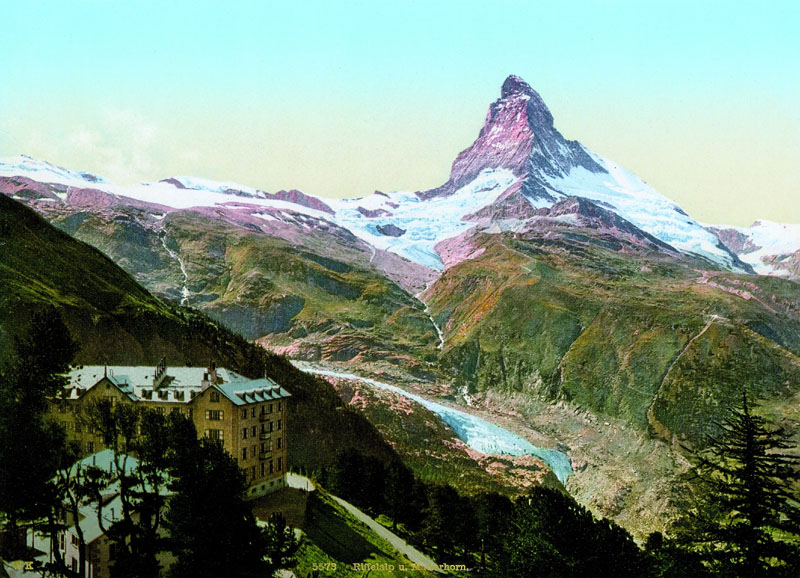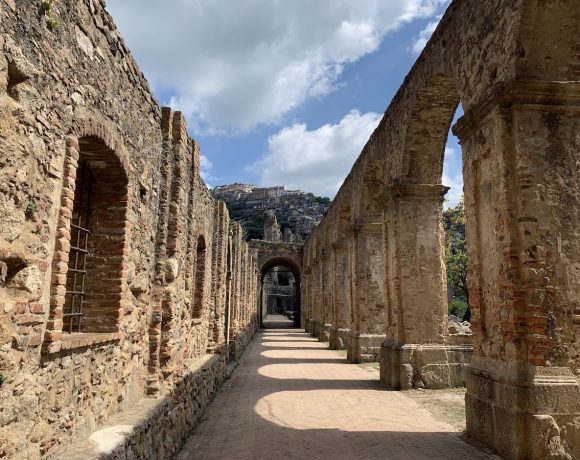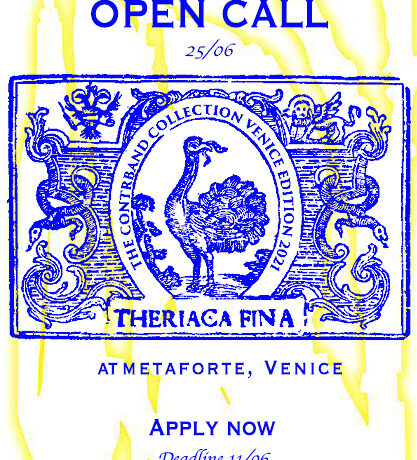Open call for artists working with photography and contemporary images. Selection of 3/4 artists for activity.
Application Deadline 25th September 2019
Production budget 8,000 euros (excluding VAT and statutory social security contributions)
Object The Museo Nazionale della Montagna – CAI Turin (hereinafter Museomontagna) as part of the iAlp project “Interactive Alpine Museums” will organize a multimedia exhibition with mountain photography as its theme. The exhibition will be carried out under the scientific and organizational responsibility of the Museum and with the curatorship of Veronica Lisino, curator of the Museum Photo Library, and Giangavino Pazzola, external curator.
For this reason, the Museomontagna launches an open call to select three/max four artists, invited to design a new exhibition project to be included in a collective multimedia exhibition which, through the contemporary outlook, enhances the role of photographic archives in the production of new knowledge.
Starting from the study and enhancement of the heritage and historical collections housed by the Turin institution, the exhibition will in fact investigate the various representations of the mountains over the years, through the exploration of its most classic stereotypes, in an attempt to decolonize, rediscover and reread mountain imagery. Thus not only landscape preconceptions, but also social and cultural, consolidated over time thanks to the use of the photographic image as a communication tool ever more often linked to dynamics of economic growth, based on tourism and brand identity. At the same time, the exhibition will be a reflection on the status of photography, its uses and meanings, from the earliest alpine explorations up to the present day. In this sense, this investigation will study the stereotypes that have been created, how many have been added to them, and how pervasive they are in contemporary representation.
The exhibition will be held in the largest of the two spaces dedicated to temporary exhibitions at the Museomontagna of Turin from the beginning of March 2020, and will remain on display until October 2020.
The production award for each artist is 8,000 euros, and includes the development and production of a new work, the possibility of borrowing additional existing works (previously produced) pertinent to the subject in question, the chance to interact on a communicative level for the dissemination of the project (e.g. possible TakeOff or curator of the Instagram image for an agreed period of time) and to discuss with the curators and the selection committee of the call for the preparation of their works. The works must be completed by mid-February 2020, before the exhibition set-up and assembly phase. The selected candidates will be supported in the development of their projects by the curators, with whom they may compare notes throughout the conception and implementation of their works. Archive consultation will be possible and supported for the entire development period of the project. Within 30 days of the announcement of the selection outcome, an initial exploratory visit to the archives will be carried out and, subsequently, by the same deadline, the outline of the project must be delivered in terms of its conceptual and implementational framework. The selected participants are therefore asked for an in-depth analysis of their initial working hypothesis as presented in the application, in order to gain approval for the project by the selection committee, which will be followed by the definitive finalization phase. Preference will be given in the selection criterion for the artists’ willingness to leave the works produced, part of them, or the documentation of the creative process that led to their creation to the Museum, signed and authenticated, also in the form of artist’s proofs and specimens, without reproduction constraints. The Museum thus intends to pursue the activity of increasing and updating its collections, with particular attention to the contemporary, also in view of a future reorganization of the permanent exhibition. It is the intention of the Museum to circulate the exhibition through national and international collaboration agreements that the institution maintains with other bodies and exhibition spaces. To this end, participants are requested to grant free loan of all the works produced for a period of four years. The entire process will be documented in a trilingual catalogue (Italian, French and English), accompanied by worksheets and in-depth texts by the curators of the project.
Theme The massive diffusion of the images that reproduce the mountain revolve around an idea – one at the same time aesthetic and ethical – of a space which is not only geographical but also economic, social and cultural, well defined and – by contrast – limited. In an often rhetorical and stereotyped representation, requirements such as authenticity and altitude have characterized the mountains, fatally contrasting them – in an excessively absolutist and superficial vision – with the urban dimension. This has long proved the privileged subject of photographic genres, such as street photography for example, which often offers a spatial and human representation of a lowdown and degraded urban context, suited to misfits and outcasts. In Simboli della montagna (2017), the academic Franco Brevini identifies three widespread stereotypes around which the representation of the mountain revolves:
a) the ‘enchanted mountain’, a still wonderfully suggestive space, corresponding to the widespread need to return to nature;
b) the ‘mountain that cures’, i.e. a territory that can offer scope for regeneration, in line with the healthy stereotype that has been imposed since the early 20th century; c) the ‘mountain of bodily knowledge’, in which the peaks provide scope for personal experimentation, in the sense of a full awareness of one’s body within an environment, and of continuous confrontation with the limit.
In this sense, the role of the image and of photographic language is decisive, both for the generation and consolidation of pre-packaged models (see the studies of Marie-Ève Bouillon). And, in turn, the preconception contributes to the stereotypical definition of the identity of places, in such an effective way as to provide a representation capable of replacing the real one. Our visual process is no longer the result of original and subjective selection, but the reproduction of what has been previously assimilated.
By virtue of this preliminary reflection, every single application is required to have at least one of the following aspects as a practice or research topic: – use of the archives and photographic collections of the Museomontagna; – the decolonization of the visual stereotypes of the mountain.
The first topic may be declined both in use of the archive as a source of suggestion and inspiration, oriented towards the documentation of unexplored, unreleased or unknown aspects, or as material in its own right to come up with new representations. As for the decolonization of the imagery, on the other hand, the projects presented may make an impact on the iconographic and morphological re-reading of the mountain, on its recurring symbols (animals, architecture, views), on the narratives and the protagonists who inhabit the stories set in these spaces.
The geographical extremes of the artistic investigation (whether carried out in the archives or with the production of new works) will be the Western Alps, paying particular attention to the Turin – Mont Blanc – Chamonix axis, with the possibility of extending the focus to the Monviso area and, continuing along the alpine ridge, to the Matterhorn and Monte Rosa, trying to identify the most representative places for the chosen theme, also in relation to the subjects present in the collections of the Museomontagna.
Museomontagna Photo Library A reduced and non-exhaustive selection by type and subject of the material preserved in the Museum’s photographic archive may be consulted on the Museomontagna website at http://www.museomontagna.org/it/area-documentazione/fototeca.php, and from the online catalogue: https://caisidoc.cai.it. For more information on the CAISiDoc catalogue and its consultation, requests may be made in writing to the PEC address: progetti.museomontagna@pec.it.
The photographic archive of the Museomontagna was created with the first donations that the members of the Italian Alpine Club and other Alpine clubs made after 1874 to the newly founded Alpine Museum. As far back as 1898, in the Guida di Torino, the author Emilio Borbonese described it as having a “rich collection of photographs, depicting views and customs of the Alps.” Starting from those early donations, the Museum increased its photographic collections, diversifying them by types of material and subjects reproduced, extending from the Alps to extraEuropean peaks. Today, the Photo Library contains 350,000 phototypes, with a chronology dating from the early 1850s to the 2000s. An excursus that, with interlacements and references, documents the history of mountain photography. The subjects provide documentation of all the main mountains of the world, in their most heterogeneous aspects. From the primitive collections, which according to the declaration of intent contained in the first Statute of the Alpine Club, intended “to make known the mountains, particularly those of Italy, and to facilitate excursions, scientific ascents and explorations,” ranging from new acquisitions, donations and settlements of various kinds, the photographic collections have expanded enormously, not only in terms of consistency, but also in terms of content, reflecting the internal change in the CAI (Italian Alpine Club) and the Museum, and the change of the conception of the mountain itself for the institutions linked to it and for society in general. A rich collection of various photographic materials (in terms of techniques and supports) corresponds to an even broader range of subjects (landscapes and panoramas, expeditions, traditional crafts and customs, portraits, infrastructures, climbing techniques, alpine architecture, volcanology, geology and caving, film stills, etc.) over a very long time span. Finally, the latest acquisitions also feature the donation of the archive of the mountaineer Walter Bonatti, which in addition to his correspondence, newspaper clippings, diaries, mountaineering equipment etc., includes just under 200,000 photographs in the form of prints, negatives, proofs and slides.
Applications Application must be received no later than 25th September 2019 by 12 pm (Turin time), to the following e-mail address: progetti.museomontagna@pec.it or postal address: Piazzale Monte dei Cappuccini, 7 – 10131 Turin (TO) Italy c/o administrative offices during the following hours: Monday to Friday from 10.00 to 12.00 and from 14.30 to 15.30.
The envelope/email must contain the following documentation: – an updated curriculum vitae, including signed authorization for the processing of personal data (Italian Legislative Decree 196/2003, GDPR UE 2016/679); – an updated portfolio with a selection of up to 10 works (max weight 10 MB). It will be appreciated if the works presented concern at least one of the following aspects: a) representation of the mountain as an object investigated in the project; b) the archive as work source or as a stimulus for creation; – an artistic statement that explains both the artist’s research themes and a working hypothesis for the call for applications in question. – a signed declaration of the willingness or otherwise to leave the works produced, part of them, or the documentation of the creative process that led to their implementation, in the Museum’s possession, signed and authenticated, also in the form of artist’s proofs or specimens, without reproduction constraints.
Modality The selection committee will consist of an internal commission from the Museum and the curators of the exhibition. Applications will be considered on the basis of the following evaluation grid: – 25 points for the curriculum vitae; – 25 points for the portfolio; – 25 points for the artistic statement; – 25 points for the declaration relating to the legacy of the works.
The result of the selection will be communicated to all participants on October 2, 2019.
Cover image: WK [Wehrli AG Kilchberg], Riffelalp u. Matterhorn, 1905, fotocromia

is a contemporary art magazine since 1980







NO COMMENT